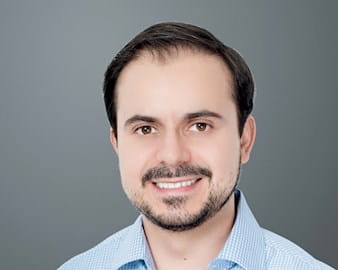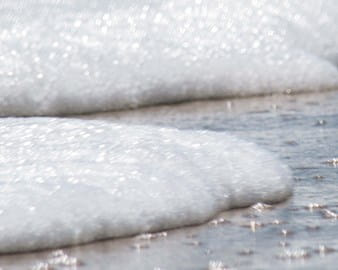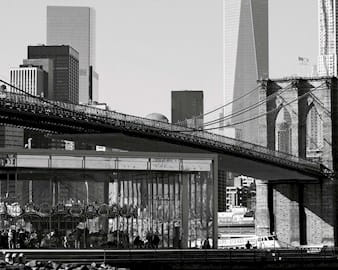
An investment manager by day, self-taught photographer Diego Gil, ’11, holds up his camera to gain a new perspective.
- By
- January 10, 2019
- Community

As a kid, when Diego Gil, ’11, lived in Europe and traveled around the continent with his family, he had two jobs—both courtesy of his father:
First, he was tasked with serving as navigator, back before GPS was king.
And, perhaps most importantly, he was appointed vacation photographer, employing his trusty point-and-shoot camera to capture all of the family’s adventures.
Gil was only 12 when he first started taking pictures, but something clicked for him as he clicked the shutter.
“It helped me start developing an eye for photography,” he said.

Since then, Gil all but gave up on photography while building his career as an investment professional. But, in recent years, he has come back to it and even gets hired regularly to photograph headshots and events.
“When I’m doing photography, I’m not thinking about anything else,” he said. “There are enough technical aspects to make it engaging and mentally stimulating, but not to the point where it’s overwhelming. It’s, in a way, therapeutic to be able to have a hobby like that.”
Gil, who was born in Colombia, lived in Germany and Luxembourg while he was growing up. He’s been in the United States for more than 18 years now and spent most of his adult life in New York City before recently relocating to Columbus, Ohio.
“I’ve had to start over in many different places,” he said. “I’ve become fascinated with identity and what makes people who they are.”
While he took a photography class in high school, he never took to the darkroom. The end results there, with a whole host of variables and unexpected outcomes caused by time and chemicals, seemed too imprecise to carry out the artistic vision he would see in his mind’s eye.
He graduated from Miami University in Ohio and moved to New York City to work at an investment bank and then at a family office before heading to Chicago in 2009 to begin the Full-Time MBA Program at Booth. The school's quantitative approach to finance drew him in, as did his previous positive experiences working with Booth alumni. Gil currently works making investments in the US high-yield fixed income space, and before that he covered emerging markets with a focus on Latin America.

“Generally speaking, people who graduate from Booth move on to have very busy work lives,” Gil said. “While sometimes it may feel like you don’t have time for them, I do believe it’s possible to make time for your hobbies.”
Gil, however, wouldn’t take his own advice until a few years after he graduated from Booth.
“My career had been such a strong priority that I neglected my personal life,” he said.
So he rented a large loft in what had once been a factory, in Brooklyn, and turned it into a studio.
In the years since Gil’s first point-and-shoot and his dislike of the darkroom, digital photography had evolved, and darkrooms, of course, largely went the way of typewriters and landlines.
Living in New York, he began making contacts in the city’s thriving artistic community. Aspiring actors and singers and models all needed headshots that conveyed their personalities to bring to auditions. He also began shooting events.
Gil's first formal assignment involved capturing a private birthday party at a hotel in Soho. He has since photographed many other events, including weddings and even the Worldwide Booth Night celebration in New York.
“Initially, I thought that being paid for my hobby would take away from the experience, but it didn't,” he said. “In fact, it gave me a higher sense of responsibility and I started doing more research and preparing better prior to my shoots.”
He knew, for example, that the lighting at that first birthday party he photographed would be challenging. So he asked a friend who owned a lounge in Brooklyn if he could practice taking pictures in the dimly lit space.
“When I'm doing photography, I'm not thinking about anything else.”
For one-time events especially, Gil focuses on ensuring that he photographs the once-in-a-lifetime moments that can go by in a flash.
“The intensity of photo shoots like those stems from the fact that if you miss an important moment, say at a wedding, you won’t get a chance to capture it again,” he said.
It can be challenging to balance his growing interest in photography with his career. Ideally, Gil said, he likes to have one photography project on the calendar every three weeks. Budding photographers need to remember that it takes time to prepare for the photo shoot, schedule the sittings, and edit the photos before presenting them to the client.
“Taking a good photograph is not just about going ‘click,’” he said. “It takes half a second to go ‘click.’ Doing photography is not a few seconds every three weeks....If you’re doing it right, it’s a very time-consuming process.”

Since it was Gil's father who first nurtured his passion for photography, it's natural that his hobby came full circle, and that his parents were some of his first subjects when he took up photography in earnest. He had just bought his first digital camera when he visited them in Florida several years ago.
"I started reading the camera manual when I was down there," he said. "I started testing the camera: my mom in the kitchen, my dad in the living room, reading the paper. Just regular scenes that were not staged. They were encouraging of it. They thought it was important for me to have a hobby."
Gil's father died in July, just six months after being diagnosed with pancreatic cancer.
"I'm glad I was able to have the opportunity to take some of those photographs," Gil said. "I'm glad to be able to say I have a lot of good photographs I took of my parents when we were all healthy."
See more of Gil's photography on his Instagram page at @dgtlnyc and on his website, dgtlnyc.com.
The Right Equipment
Sure, anybody with a smartphone can be a photographer. But investing in, and learning how to use, a digital SLR camera is essential for more serious work, Gil said. Start with an entry-level digital camera before moving up to a mid-level or professional model. You’ll want to look for a class or watch videos online to learn what the basic settings are and how to manipulate them. Be sure to try out a camera in person before buying it, he advised. “It’s really important to feel the camera in your hands,” he said. “It’s important that it feels comfortable.”
Finding a Subject
“Subject is a very broad term,” Gil said. It might be people or birds or parades or landscapes. Be sure to find a subject that’s accessible to you. For example, Gil began with Florida beaches and later moved on to people in NYC and nighttime skyline scenes. “If you’re taking pictures of a subject you are intrigued by, it’s easier to become good at photography,” he said.
Developing an Eye
Gil is a self-taught photographer, learning by experience and by reading and watching videos. The best way to improve as a photographer, he said, is by taking lots of photos and beginning to understand how camera settings and other variables affect the outcome. “There are subtleties in light, in the way light travels and the way light dissipates,” he said. “You can play with your camera in different light scenarios to understand how those work.” With practice, photographers will begin to understand which lenses and settings to use and which time of day is best to capture a desired scene, he said.

When one of their members passed away, the Mumbai Leadership Learning Circle leapt into action to support his family.
A Family of Alumni
Executive MBA student Edoardo Collevecchio used Booth’s global flexibility to expand his company into Asia.
A Career Catalyst
The leadership pioneer reflects on ways that the Booth community comes together during times of crisis.
The Book of Booth: Professor Harry Davis